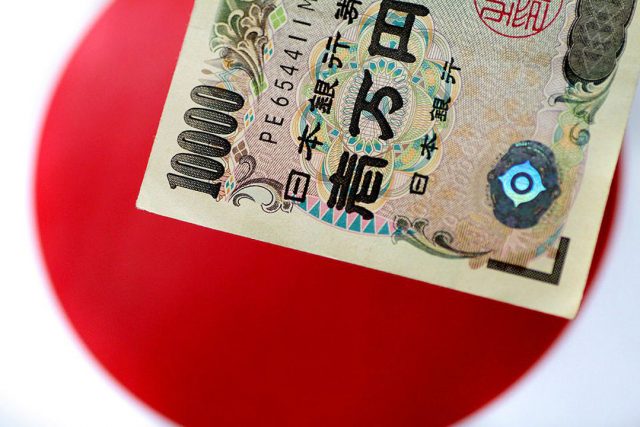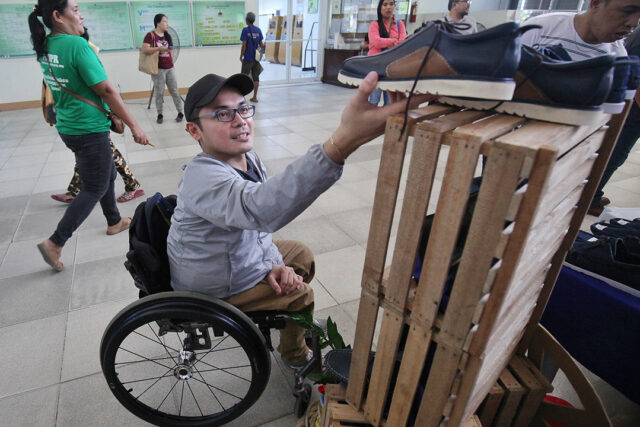It was correct for Benjamin Enke, the Paul Sack Associate Professor of Political Economy at Harvard University, to point out that previous discussions of political economy “were deeply intertwined with questions of morality.” He observed that both Adam Smith and Karl Marx wrote about politics and the economy with some moral considerations. If Smith maintained that the common good could be promoted by the invisible hand, Marx believed no less than a revolution ought to be waged by the working class for the advancement of human society.
Writing for the International Monetary Fund’s (IMF) Finance and Development last March, Enke observed a sea change. For most of the 20th century, moral psychology and economics were thought to be distinct and had very little space for convergence. Their areas of concern were far too different, their goals rarely coincide. He challenged policymakers that if they were to do their job in scoring victory against inequality, political conflict and erosion of trust in both economic and political institutions, “putting moral insight back into economics enhances understanding of political outcomes.”
Why, even the IMF — which has been, and supposed to be, an apolitical international financial institution mandated to foster monetary cooperation, financial stability, and economic growth — has begun to be involved in such areas as poverty reduction and social inclusion, financial inclusion, debt relief, and social spending. At many points, the IMF also engaged in such issues as women’s rights, climate change, and pandemic preparedness. This policy expansiveness demonstrates the increased recognition that social factors, other than economic and political, could determine the final outcome of economic and political issues and events that are unquestionably critical to sustainable development, the be-all and end-all of its own mandate.
Enke quoted Jonathan Haidt’s The Righteous Mind: Why Good People are Divided by Politics and Religion on his notion that morality evolved as an economically functional tool. This means society could enforce cooperation among the population that permits large-scale production, distribution, and sale, and at the end, promote social cohesion by some moral standards of peace and order in society. Such moral standards have guided humanity as societies become increasingly complex and pro-society norms have become even more imperative.
To a large extent, the recent brouhaha about the country’s national budget process and the ambush of PhilHealth funds in a very graphic sense illustrates the departure of decency and morality from economic and political decisions. Of course, our fiscal authorities could very well declare that there are unused funds in public health insurance and therefore the Government could sequester them for deployment to what it deemed more important areas. But if common sense and adherence to established laws of the land — and these involve morality — are to weigh in, it is impossible to claim that there are idle funds. There are still too many Filipinos outside the current coverage of PhilHealth who have to shoulder the rising medical bills. There are still too many physical infirmities and issues outside the coverage of PhilHealth, and that means out-of-pocket expenses of Filipinos continue to soar.
Why can’t we elevate the fate of those destitutes among us to a simple bed in a public hospital rather than to a coffin in death?
But in the name of fiscal consolidation and political expediency, a simple Department order in the Executive Department was allowed to trump not only the Universal Health Care Act but also the Philippine Constitution that mandates the State to promote the right to health of the Filipino people, that essential “…health and social services are accessible and affordable for all.” Morality should have compelled the state to uphold the standards of decent human society in the Philippines, and functional health is one of the major planks of a decent human society and sensible public policy.
Introducing morality into economic and political decisions is not merely one of moralizing choices. Far from it, for economists, Enke wrote, have successfully tested and validated the theories of moral psychology like the functional role of morality through “large-scale empirical work.” And these are real world experiments and validation.
It is useful to understand some examples of how moral systems evolve in adapting to economic and political environments. One good example is close family relationships which could lead to what Enke called particularist moral values. There is primary value in loyalty to family and local communities. Otherwise, less close family relationships, but more focused on the common good, could engender more universalist moral values.
When exposed to market realities, those communities with more universalist values are likely to thrive — for instance, fairness in dealings with people outside one’s immediate circle. Enke’s paper, written in 2023, was quoted to show that “societies with greater historical exposure to markets exhibit higher levels of universalism. “The more people interact with strangers in markets, the more they develop moral norms that favor impersonal cooperation and trust.”
The close linkage of morality with economic and political behavior has been found to work both ways. Economic conditions also help form moral values which, in turn, help determine economic and political outcomes. Whether one believes or not, it was established that particularist and universalist values lead people to differ on issues like taxation, distribution, immigration, globalization, market contestability, and even foreign aid. This is not to mention views about denying people access to both economic and political power.
Universalism is found to be characteristic of those who are more progressive and democratic, those who prioritize fairness and equality for all, those who will find, for instance, Congress’ reduction in the education budget as unconscionable because the quality of education in the Philippines today has reached rock bottom. Universalists are expected to oppose bloating the unprogrammed allocations where priority infrastructure projects and other social spending items in the budget are to be assigned. This is necessary to give way to less critical public works that are juicier when it comes to bribes and commissions. They are instead prioritized and included in the programmed component of the national budget.
How can civil society condone borrowing to finance this type of government projects if they were to be assigned to unprogrammed spending of the National Government? Without a moral compass, this was exactly what has been done in recent years to extract regulatory capture.
Particularism is pro-political and economic dynasties and oligarchies. These people are loyal to themselves and their kind. They are likely to resist income and wealth distribution, higher taxation of their products and services, and even immigration which has led to a more diversified and robust communities of achievers. Particularists are anxious their kind might be dislodged from historical dominance. Such prejudices would explain political polarization and even the difficulty of achieving consensus in formulating economic and political policies.
Are we seeing a turnaround from the economists and political scientists’ propensity in favor of empirical and data-driven analysis? It might be too early, but the Harvard professor suggests that they could benefit by engaging more with moral psychology. Moral psychology could also deepen their insights from the inputs of economists and other empirical scientists.
There is much to gain from public policy coming from an interdisciplinary approach to understanding difficult social, economic and political events and issues. Enke was wise to point out the example of income and wealth redistribution. Psychology research can explain why some people hold certain views about justice and fairness. Economics data can correlate how these beliefs translate into actual voting behavior and policy choices. A good understanding of moral divisions would be useful to public policy that aims to build more universal and equitable strategies. Public policy could be more effective if this would be framed in such a way that benefits are also to be reaped by local communities and even some narrow-vested interests. For instance, addressing corruption is a public good that could lead to more optimal use of public resources. It is good for the general populace, it is good even for those doing business because economic growth is likely to be more sustainable over the long run. Those engaged in corruption should have less reason to dirty their hands because the frontiers of legitimate opportunities have been expanded.
Public policy, now cognizant of moral values in shaping economic and political choices, would have a very potent instrument for warding off an otherwise divisive political alignment. Public policy with a conscience does not have to erode its public ownership because it saves on taxes, expands social services, and promotes trust in Government.
Commissions of over 60% in government projects would then be abhorrent. With more public resources at government disposal, the country’s economic managers could avoid regularly engaging in drawing up ambitious macroeconomic assumptions and growth targets only to downgrade them in time.
A sad commentary but this aspect of state craft has been sorely lacking in Philippine governance in recent years.
Diwa C. Guinigundo is the former deputy governor for the Monetary and Economics Sector, the Bangko Sentral ng Pilipinas (BSP). He served the BSP for 41 years. In 2001-2003, he was alternate executive director at the International Monetary Fund in Washington, DC. He is the senior pastor of the Fullness of Christ International Ministries in Mandaluyong.














